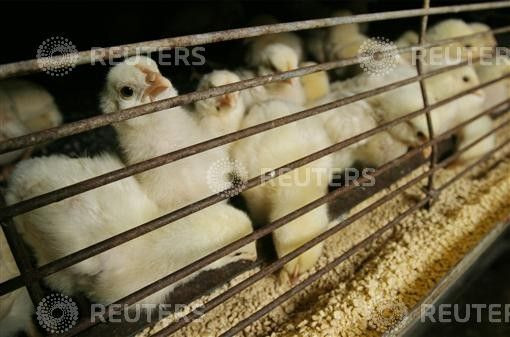Unfounded Rumors About Coronavirus Wreaking Havoc With India’s Poultry Industry

KEY POINTS
- India has long prohibited dairy imports to protect rural livelihoods
- Rumors spread on social media that coronavirus was caused by chickens
- The poultry industry employs 4 million people in India
Rumors that China’s coronavirus was spread by chickens has led to a direct plunge in poultry sales in India.
India’s huge poultry industry has lost 13 billion rupees [$182 million] in lost sales – with prices cut in half -- over the past three weeks after social media users speculated the virus in China was transmitted by chickens.
In addition, prices of soybean and corn – commodities used in animal feed – have fallen by 8% in the last three weeks as chicken farmers cut down feed purchases.
Although India has only confirmed three coronavirus cases thus far, users of the WhatsApp message platform have spread rumors that chickens were behind the epidemic in China.
Vasant Kumar Shetty, president of the Poultry Breeders Welfare Association in Maharashtra, said the industry has been losing 120 million rupees [$1.68 million] every day due to lower prices.
“Many people stopped eating chicken believing rumors spread on WhatsApp,” said Uddhav Ahire, chairman of Anand Agro Group, a poultry firm based in Nashik, Maharashtra. “Chicken prices have crashed due to an abrupt drop in demand.”
In response, Indian authorities have assured the public that eating chicken is safe while officials in the state of Maharashtra have asked police to arrest against anyone spreading such false rumors.
The government’s Animal Husbandry Ministry also stated that poultry was not found to be complicit in the transmission of coronavirus to humans.
Prasanna Pedgaonkar, general manager of poultry firm Venky’s, said “it will take time [for sales] to go back to [a] normal level.”
In the southern state of Karnataka poultry consumption has plunged by 30% in recent weeks.
“Some vested interests are spreading fake news on social media about chicken and coronavirus, while there is absolutely no connection between the two,” said Sushant Rai, president of the Karnataka Poultry Farmers & Breeders Association.
Rai added that such a campaign of scaremongering and misinformation has hurt the livelihood of millions of poultry farmers.
Small chicken farmers have responded to the lower prices by cutting production -- this could, in turn, lead to lower supplies and higher prices starting in April.
The Indian poultry industry is valued at about $12.6 billion and employs more than 4 million people.
Separately, India has made an offer to partly open up its poultry and dairy markets to the U.S. just ahead of President Donald Trump’s first official visit to the country next week.
Traditionally, India, the largest milk producer in the world, has barred dairy imports in order to protect 80 million rural households that depend on the industry for their livelihood. However, now Prime Minister Narendra Modi may seek to improve trade ties with the U.S. by making some concessions. Reportedly, Modi wants to renegotiate better terms for India’s pharmaceutical, textile and agricultural machinery exports to the U.S.
As such, the Modi government will permit some access to India’s dairy market – however with a 5% tariff and quotas attached. In addition, American dairy imports would need to be certified that they were not derived from animals which have consumed feed that included internal organs, blood meal or tissues of ruminants.
“Our [Indian] dairy economy is not sound given the production cost and unaffordability of keeping the cattle once they stop producing milk. Similarly, there is a huge environmental cost to poultry,” a source told Indian media about why Modi wants to open up these sectors.
However, the U.S. dairy industry was skeptical of any such trade concessions.
“We’re always looking for market access, but in terms of India… I’m not aware of any real progress going on,” said Michael Dykes, president of the International Dairy Foods Association.
India also said it will allow some imports of chicken legs, turkey, blueberries and cherries from the U.S. while also reducing tariffs on chicken legs from 100% to 25% (although U.S. trade negotiators want that tariff slashed to 10%.)
© Copyright IBTimes 2025. All rights reserved.





















